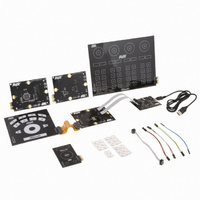ATQT600 Atmel, ATQT600 Datasheet - Page 28

ATQT600
Manufacturer Part Number
ATQT600
Description
KIT EVAL TOUCH FOR QT600
Manufacturer
Atmel
Series
QTouch™r
Specifications of ATQT600
Sensor Type
Touch Screen
Interface
USB
Embedded
Yes, Other
Utilized Ic / Part
ATtiny88, ATmega324PA, ATxmega128A1
Processor To Be Evaluated
ATtiny88, ATmega324, ATxmega128
Data Bus Width
8 bit, 16 bit
Interface Type
USB
Maximum Operating Temperature
+ 85 C
Minimum Operating Temperature
- 40 C
Operating Supply Voltage
1.6 V to 3.6 V
Silicon Manufacturer
Atmel
Kit Application Type
Sensor
Application Sub Type
Touch Sensor
Kit Contents
USB Bridge, MCU Cards, Touchpad Cards
Svhc
No SVHC (15-Dec-2010)
Mcu Supported Families
ATtiny88,
Rohs Compliant
Yes
Lead Free Status / RoHS Status
Lead free / RoHS Compliant
Voltage - Supply
-
Sensitivity
-
Sensing Range
-
Lead Free Status / Rohs Status
Lead free / RoHS Compliant
Available stocks
Company
Part Number
Manufacturer
Quantity
Price
Company:
Part Number:
ATQT600
Manufacturer:
Atmel
Quantity:
135
10620D–AT42–04/09
Self-capacitance Zero-dimensional Sensors
3.3.1
3.3.2
3-8
Printed Electrode Method
Philipp Spring
One option is to print an electrode array on the inner surface of the front panel. In this case the electrode
shape rules are as described in
described in
connected using spring contacts
(see
Remember that with this technique, the area where the interconnection is made is touch-sensitive too.
Figure 3-10. Printed Electrode Method Showing Several Connection Methods
A subtle but important derivative of the method in
control PCB, but with no printed electrode on the panel surface.
Note that the spring is not intended to compress when touched; it is always maintained in a compressed
state. The spring forms a static electrode that bridges the gap between the touch panel and the
component PCB.
One such spring is Atmel’s patented Philipp spring product (see Figure 3-11)
section that interfaces with the panel, and a central compliant bridge section. The conical section
collapses first under pressure, and the center bridge last. This “top-down” collapse of the spring under
pressure causes the coils to form a tight, flat spiral that is a very good approximation to a disc electrode
(see Figure 3-12 on page 3-9).
1. Check for life expectancy of these spring tails especially where vibration may be present that can scratch off the
2. ACF/ACP = Anisotropic Conductive Film/Anisotropic Conductive Paste. This is a means of electrically joining and
3. The Philipp spring technology is available under license. Please consult Atmel for the licensing options on this
sensor material. The dissimilar metals may also cause premature ohmic failure of the contact due to oxidisation.
It is advisable to “crimp” or solder the spring to the control PCB to give a gas tight joint for these reasons. Also
consider drop test survival issues when using springs.
bonding two circuits together with a formulation of “glue” that is full of tiny silver or gold particles. The particles are
spaced so that they do not contact their neighbors but will contact any circuit placed in the “Z” axis when heated
and pressed together.
technology. For advice on suitable sources of springs, contact Atmel’s Touch Technology Division.
Figure
™
Method
3-10).
Section 2.3.2 “Electrode and Interconnection Materials” on page
Control
PCB
Front
Panel
Conductive
Foam/Rubber
Printed
Electrode
Section 3.2.2 “Electrode Shapes” on page
(1)
, conductive foam or rubber, or a flex tail attached using ACF/ACP
Spring
PCB Pad
Section 3.3.1
Connector
FPC/FFC
is to use a spring connection to the
ACF/ACP
3-2, and the materials are as
Touch Sensors Design Guide
2-4. The sensors can be
Flex Tail
(3)
. This has a conical
(2)













